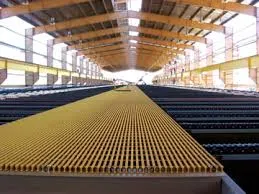
-
 Afrikaans
Afrikaans -
 Albanian
Albanian -
 Amharic
Amharic -
 Arabic
Arabic -
 Armenian
Armenian -
 Azerbaijani
Azerbaijani -
 Basque
Basque -
 Belarusian
Belarusian -
 Bengali
Bengali -
 Bosnian
Bosnian -
 Bulgarian
Bulgarian -
 Catalan
Catalan -
 Cebuano
Cebuano -
 China
China -
 China (Taiwan)
China (Taiwan) -
 Corsican
Corsican -
 Croatian
Croatian -
 Czech
Czech -
 Danish
Danish -
 Dutch
Dutch -
 English
English -
 Esperanto
Esperanto -
 Estonian
Estonian -
 Finnish
Finnish -
 French
French -
 Frisian
Frisian -
 Galician
Galician -
 Georgian
Georgian -
 German
German -
 Greek
Greek -
 Gujarati
Gujarati -
 Haitian Creole
Haitian Creole -
 hausa
hausa -
 hawaiian
hawaiian -
 Hebrew
Hebrew -
 Hindi
Hindi -
 Miao
Miao -
 Hungarian
Hungarian -
 Icelandic
Icelandic -
 igbo
igbo -
 Indonesian
Indonesian -
 irish
irish -
 Italian
Italian -
 Japanese
Japanese -
 Javanese
Javanese -
 Kannada
Kannada -
 kazakh
kazakh -
 Khmer
Khmer -
 Rwandese
Rwandese -
 Korean
Korean -
 Kurdish
Kurdish -
 Kyrgyz
Kyrgyz -
 Lao
Lao -
 Latin
Latin -
 Latvian
Latvian -
 Lithuanian
Lithuanian -
 Luxembourgish
Luxembourgish -
 Macedonian
Macedonian -
 Malgashi
Malgashi -
 Malay
Malay -
 Malayalam
Malayalam -
 Maltese
Maltese -
 Maori
Maori -
 Marathi
Marathi -
 Mongolian
Mongolian -
 Myanmar
Myanmar -
 Nepali
Nepali -
 Norwegian
Norwegian -
 Norwegian
Norwegian -
 Occitan
Occitan -
 Pashto
Pashto -
 Persian
Persian -
 Polish
Polish -
 Portuguese
Portuguese -
 Punjabi
Punjabi -
 Romanian
Romanian -
 Russian
Russian -
 Samoan
Samoan -
 Scottish Gaelic
Scottish Gaelic -
 Serbian
Serbian -
 Sesotho
Sesotho -
 Shona
Shona -
 Sindhi
Sindhi -
 Sinhala
Sinhala -
 Slovak
Slovak -
 Slovenian
Slovenian -
 Somali
Somali -
 Spanish
Spanish -
 Sundanese
Sundanese -
 Swahili
Swahili -
 Swedish
Swedish -
 Tagalog
Tagalog -
 Tajik
Tajik -
 Tamil
Tamil -
 Tatar
Tatar -
 Telugu
Telugu -
 Thai
Thai -
 Turkish
Turkish -
 Turkmen
Turkmen -
 Ukrainian
Ukrainian -
 Urdu
Urdu -
 Uighur
Uighur -
 Uzbek
Uzbek -
 Vietnamese
Vietnamese -
 Welsh
Welsh -
 Bantu
Bantu -
 Yiddish
Yiddish -
 Yoruba
Yoruba -
 Zulu
Zulu
frp chimney construction and installation for industrial and ...
FRP Chimney Construction and Installation for Industrial Applications
Fiber Reinforced Polymer (FRP) chimneys have gained significant traction in various industrial settings due to their durability, lightweight structure, and resistance to corrosion. As industries increasingly prioritize efficiency and sustainability, the need for reliable and cost-effective chimney solutions has become paramount. This article outlines the key aspects of FRP chimney construction and installation focused on their application in industrial environments.
Understanding FRP Technology
FRP is a composite material made of a polymer matrix reinforced with fibers, typically glass or carbon. The resulting structure offers exceptional strength-to-weight ratios, making it ideal for towering applications such as chimneys. Additionally, FRP is resistant to a wide range of chemicals, environmental factors, and extreme temperatures, which can prove detrimental to traditional materials like steel or concrete in harsh industrial settings.
Advantages of FRP Chimneys
One of the most significant benefits of FRP chimneys is their lightweight nature. This characteristic simplifies transportation and installation, reducing labor and equipment costs. Furthermore, compared to conventional materials, FRP requires minimal maintenance, which leads to lower long-term operational costs. The corrosion resistance of FRP makes it an attractive option for industries that deal with aggressive flue gases or high moisture levels, ultimately extending the lifespan of the chimney.
Construction Process
frp chimney construction and installation for industrial and ...

The construction of FRP chimneys begins with a detailed design phase, where engineers analyze site-specific requirements such as height, load capacity, and environmental conditions. Once the design is finalized, fabricating the FRP sections usually occurs in a controlled factory environment, ensuring high-quality production standards. These sections are then transported to the installation site.
At the installation phase, careful planning is essential. The chimney typically consists of several modular sections, which are stacked and bonded together. Specialized adhesive and techniques are employed to ensure the integrity of the joints and to achieve a leak-proof structure. Additionally, the installation process must comply with local building codes and safety regulations.
Installation Considerations
Safety is a critical consideration during both construction and installation. Proper scaffolding, fall protection, and equipment must be used to ensure worker safety, especially when dealing with heights. Furthermore, the chimney design should incorporate features that facilitate maintenance, such as access ladders and platforms.
Conclusion
FRP chimney construction and installation present a modern solution for industries seeking robust, efficient, and sustainable chimney systems. Their lightweight and corrosion-resistant properties make them ideal for environments exposed to harsh conditions. As more industries recognize the advantages of utilizing FRP materials, the demand for FRP chimneys is expected to grow, making them a standard choice for future industrial applications. Ultimately, the successful implementation of FRP chimneys reflects a commitment to innovation and environmental stewardship in industrial practices.
Latest news
-
Exploring the Benefits of Top Hammer Drifter Rods for Enhanced Drilling PerformanceNewsJun.10,2025
-
High-Precision Fiberglass Winding Machine for GRP/FRP Pipe Production – Reliable & Efficient SolutionsNewsJun.10,2025
-
FRP Pipes & Fittings for Shipbuilding - Corrosion-Resistant & LightweightNewsJun.09,2025
-
Premium FRP Flooring Solutions Durable & Slip-ResistantNewsJun.09,2025
-
Premium Fiberglass Rectangular Tanks Durable & Lightweight SolutionNewsJun.09,2025
-
Tapered Drill String Design Guide Durable Performance & UsesNewsJun.09,2025









